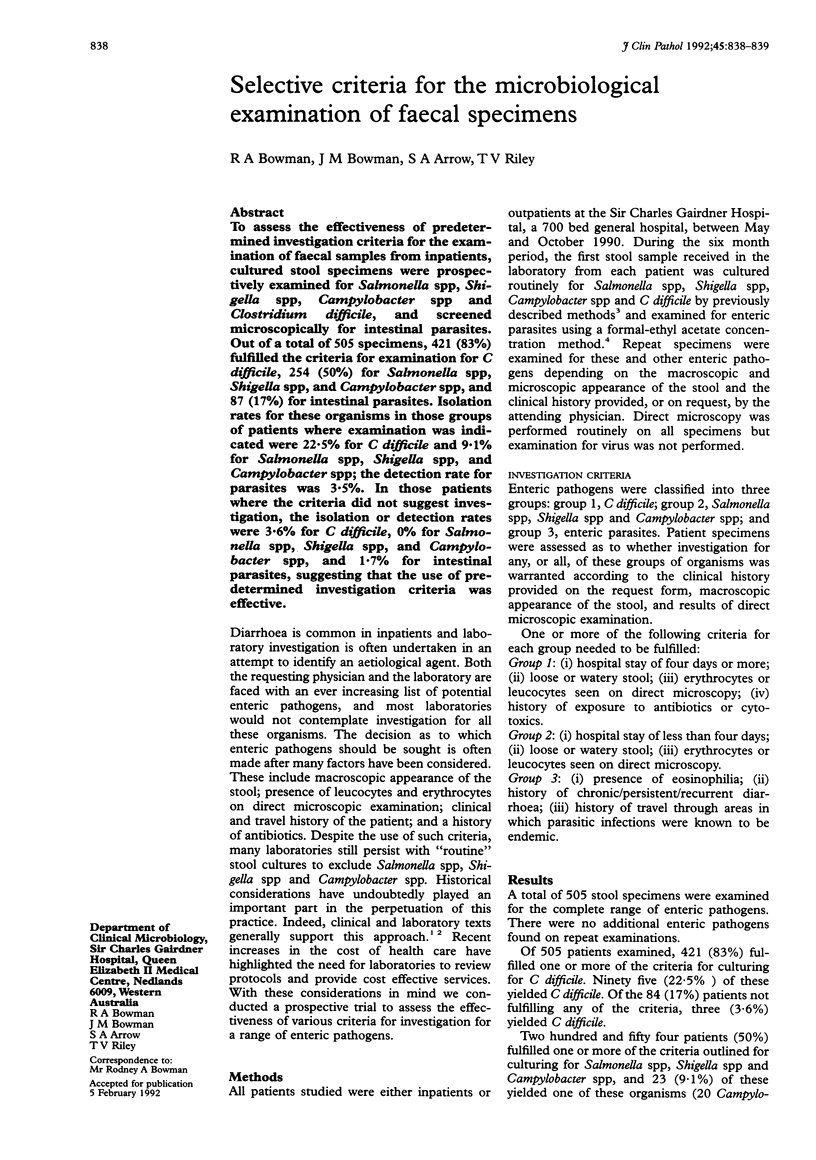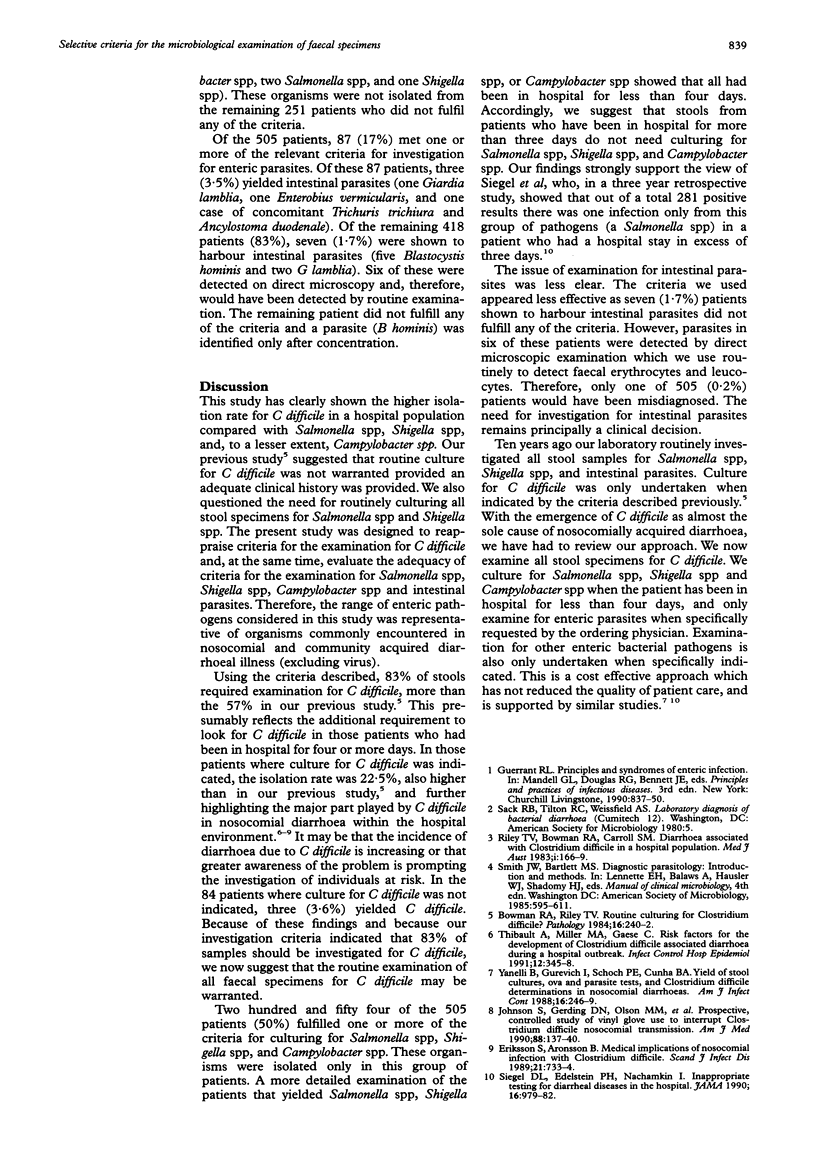Abstract
To assess the effectiveness of predetermined investigation criteria for the examination of faecal samples from inpatients, cultured stool specimens were prospectively examined for Salmonella spp, Shigella spp, Campylobacter spp and Clostridium difficile, and screened microscopically for intestinal parasites. Out of a total of 505 specimens, 421 (83%) fulfilled the criteria for examination for C difficile, 254 (50%) for Salmonella spp, Shigella spp, and Campylobacter spp, and 87 (17%) for intestinal parasites. Isolation rates for these organisms in those groups of patients where examination was indicated were 22.5% for C difficile and 9.1% for Salmonella spp, Shigella spp, and Campylobacter spp; the detection rate for parasites was 3.5%. In those patients where the criteria did not suggest investigation, the isolation or detection rates were 3.6% for C difficile, 0% for Salmonella spp, Shigella spp, and Campylobacter spp, and 1.7% for intestinal parasites, suggesting that the use of predetermined investigation criteria was effective.
Full text
PDF

Selected References
These references are in PubMed. This may not be the complete list of references from this article.
- Bowman R. A., Riley T. V. Routine culturing for Clostridium difficile? Pathology. 1984 Jul;16(3):240–242. doi: 10.3109/00313028409068530. [DOI] [PubMed] [Google Scholar]
- Eriksson S., Aronsson B. Medical implications of nosocomial infection with Clostridium difficile. Scand J Infect Dis. 1989;21(6):733–734. doi: 10.3109/00365548909021705. [DOI] [PubMed] [Google Scholar]
- Johnson S., Gerding D. N., Olson M. M., Weiler M. D., Hughes R. A., Clabots C. R., Peterson L. R. Prospective, controlled study of vinyl glove use to interrupt Clostridium difficile nosocomial transmission. Am J Med. 1990 Feb;88(2):137–140. doi: 10.1016/0002-9343(90)90462-m. [DOI] [PubMed] [Google Scholar]
- Riley T. V., Bowman R. A., Carroll S. M. Diarrhoea associated with Clostridium difficile in a hospital population. Med J Aust. 1983 Feb 19;1(4):166–169. doi: 10.5694/j.1326-5377.1983.tb104346.x. [DOI] [PubMed] [Google Scholar]
- Siegel D. L., Edelstein P. H., Nachamkin I. Inappropriate testing for diarrheal diseases in the hospital. JAMA. 1990 Feb 16;263(7):979–982. [PubMed] [Google Scholar]
- Thibault A., Miller M. A., Gaese C. Risk factors for the development of Clostridium difficile-associated diarrhea during a hospital outbreak. Infect Control Hosp Epidemiol. 1991 Jun;12(6):345–348. doi: 10.1086/646354. [DOI] [PubMed] [Google Scholar]
- Yannelli B., Gurevich I., Schoch P. E., Cunha B. A. Yield of stool cultures, ova and parasite tests, and Clostridium difficile determinations in nosocomial diarrheas. Am J Infect Control. 1988 Dec;16(6):246–249. doi: 10.1016/s0196-6553(88)80003-8. [DOI] [PubMed] [Google Scholar]


